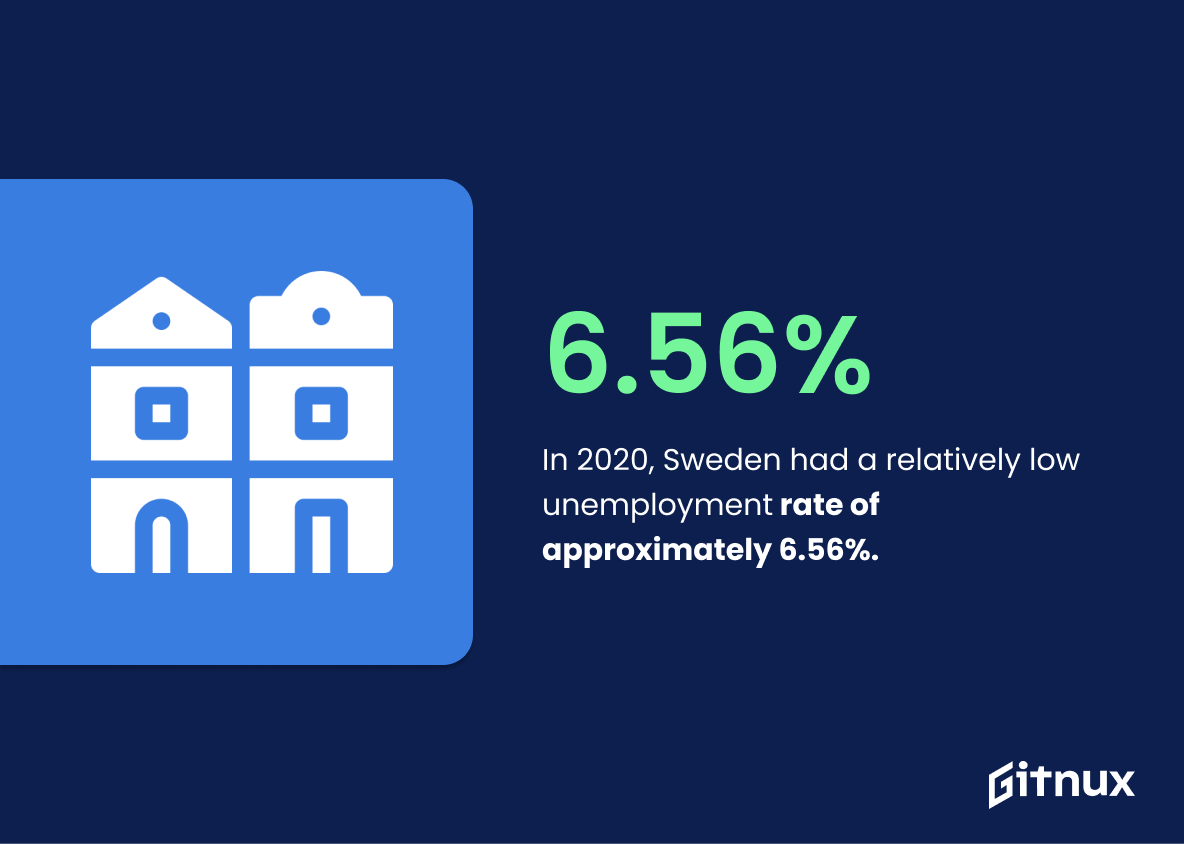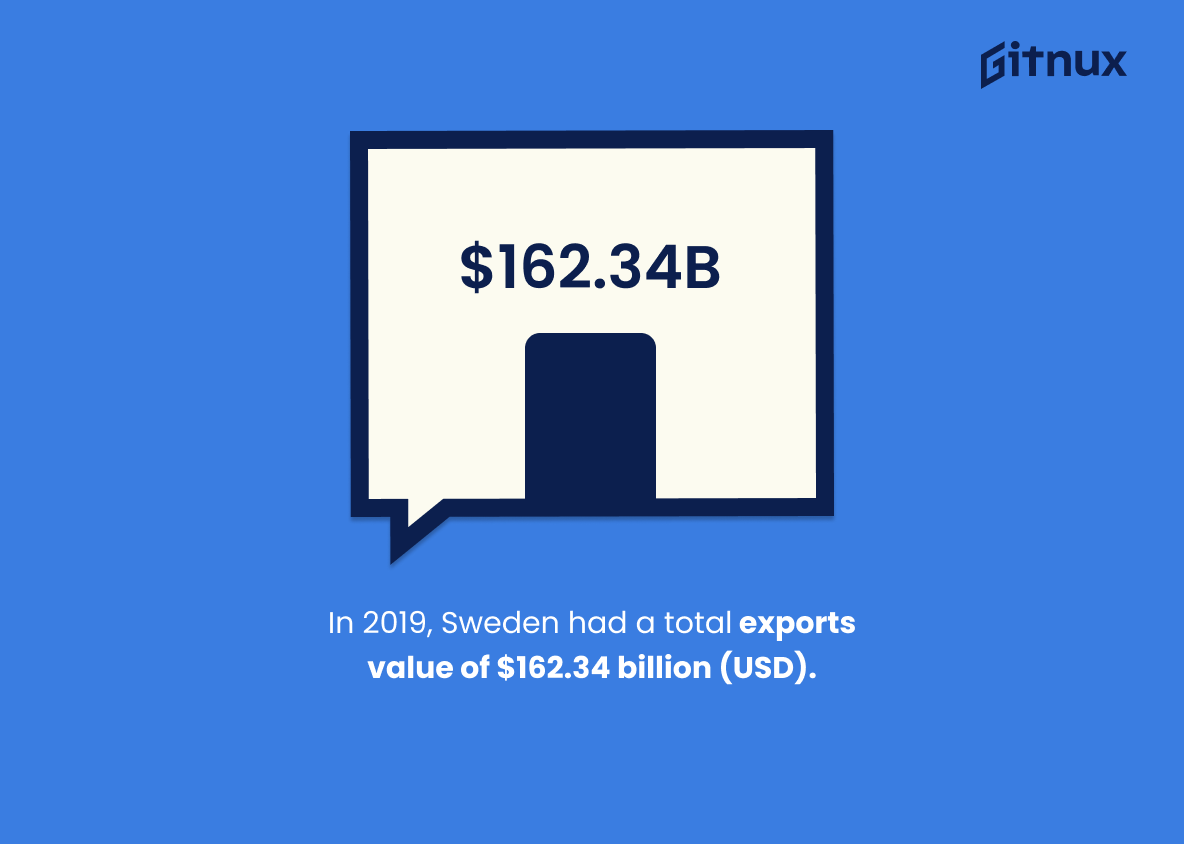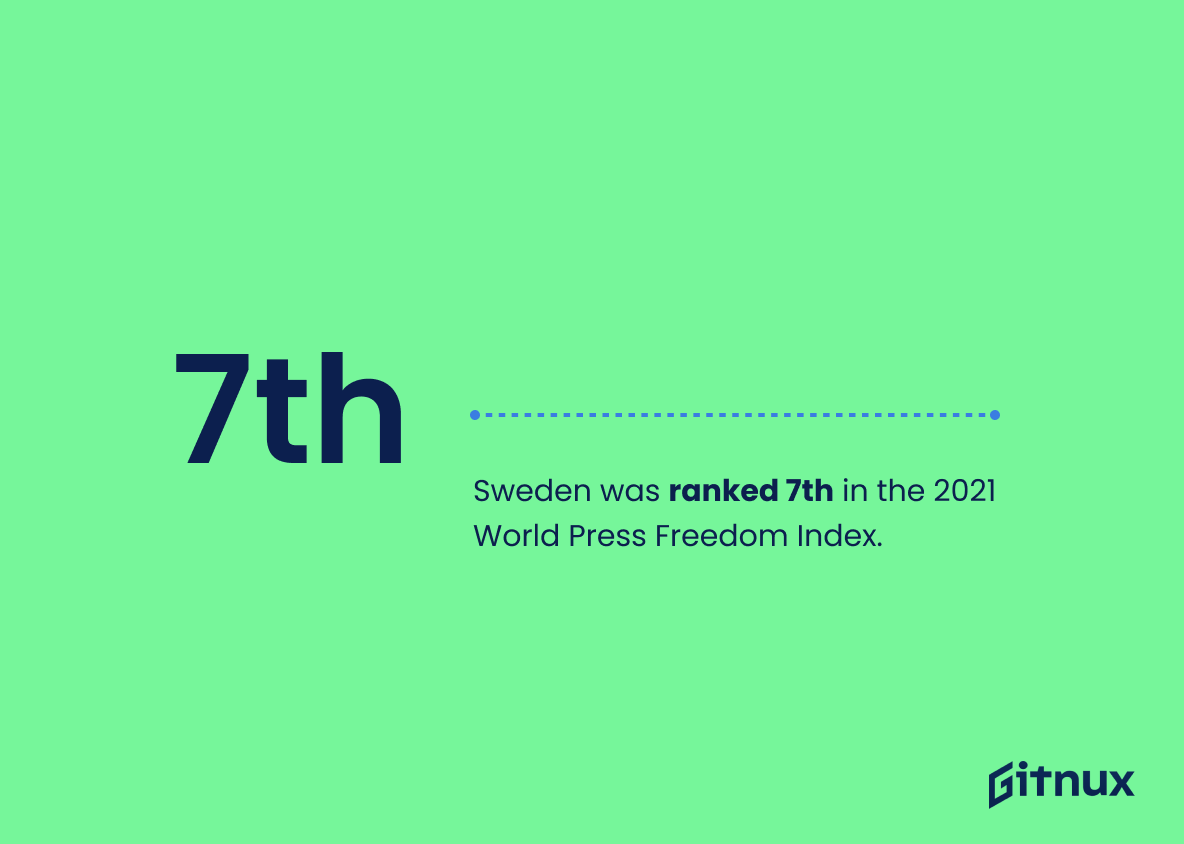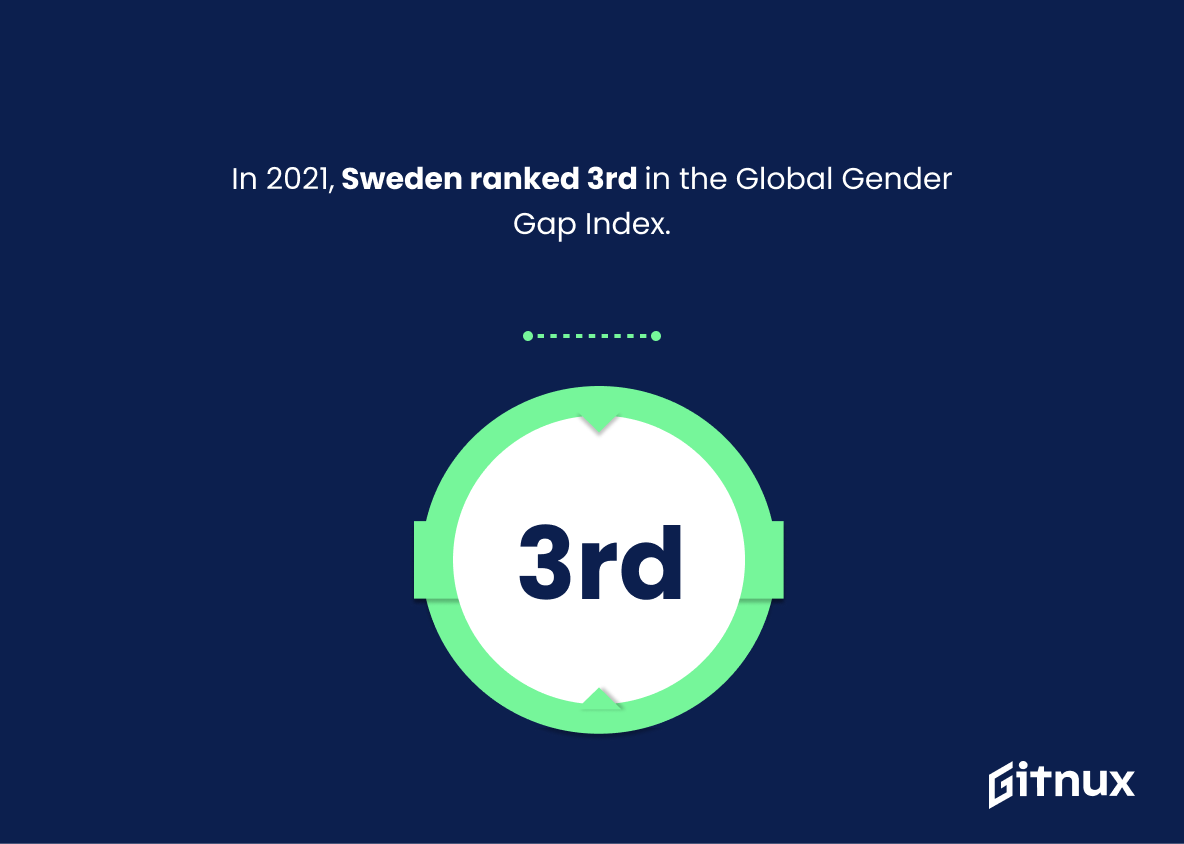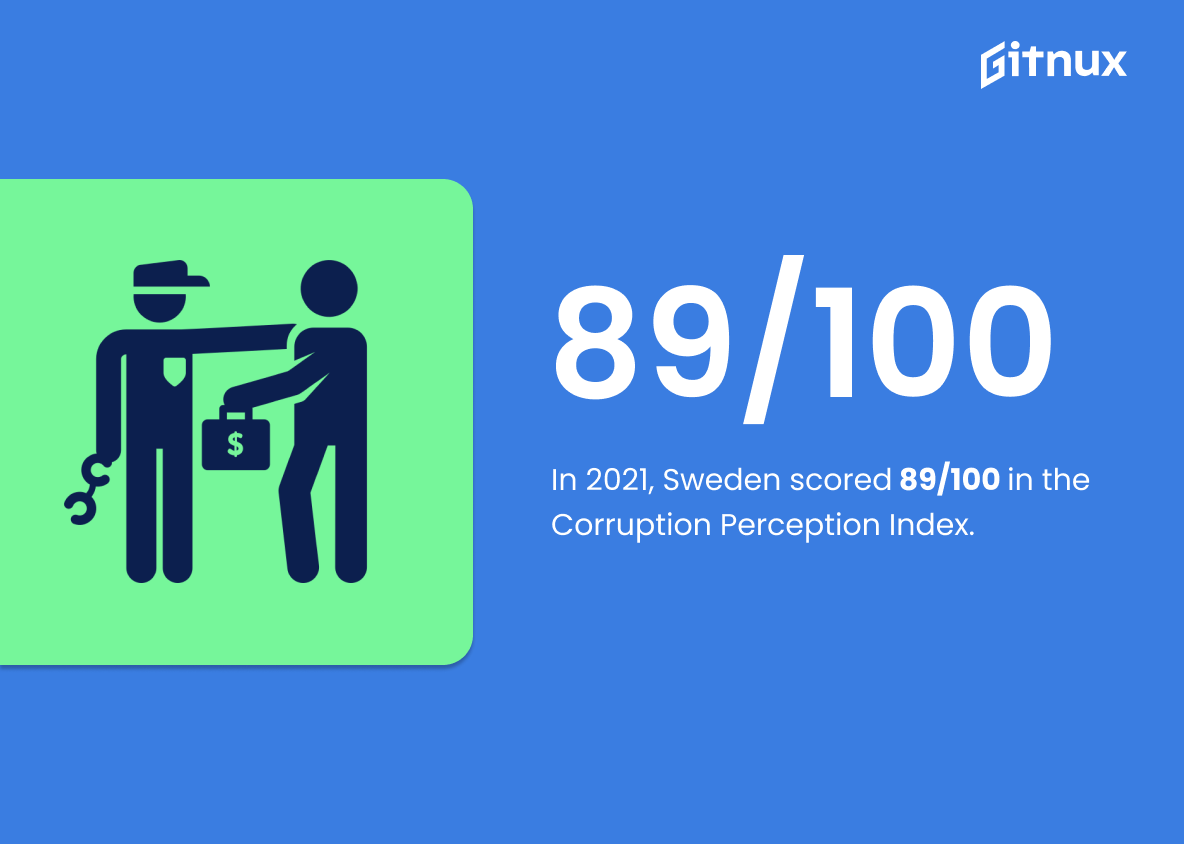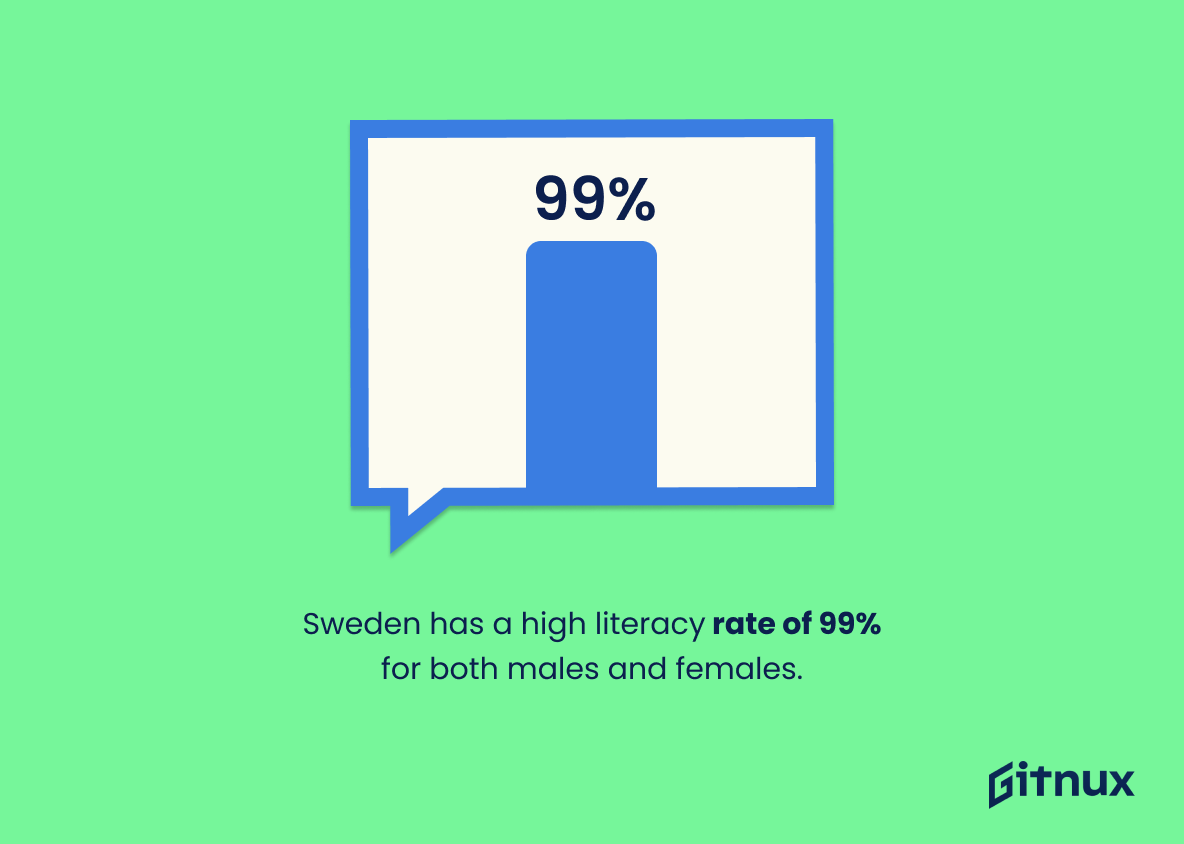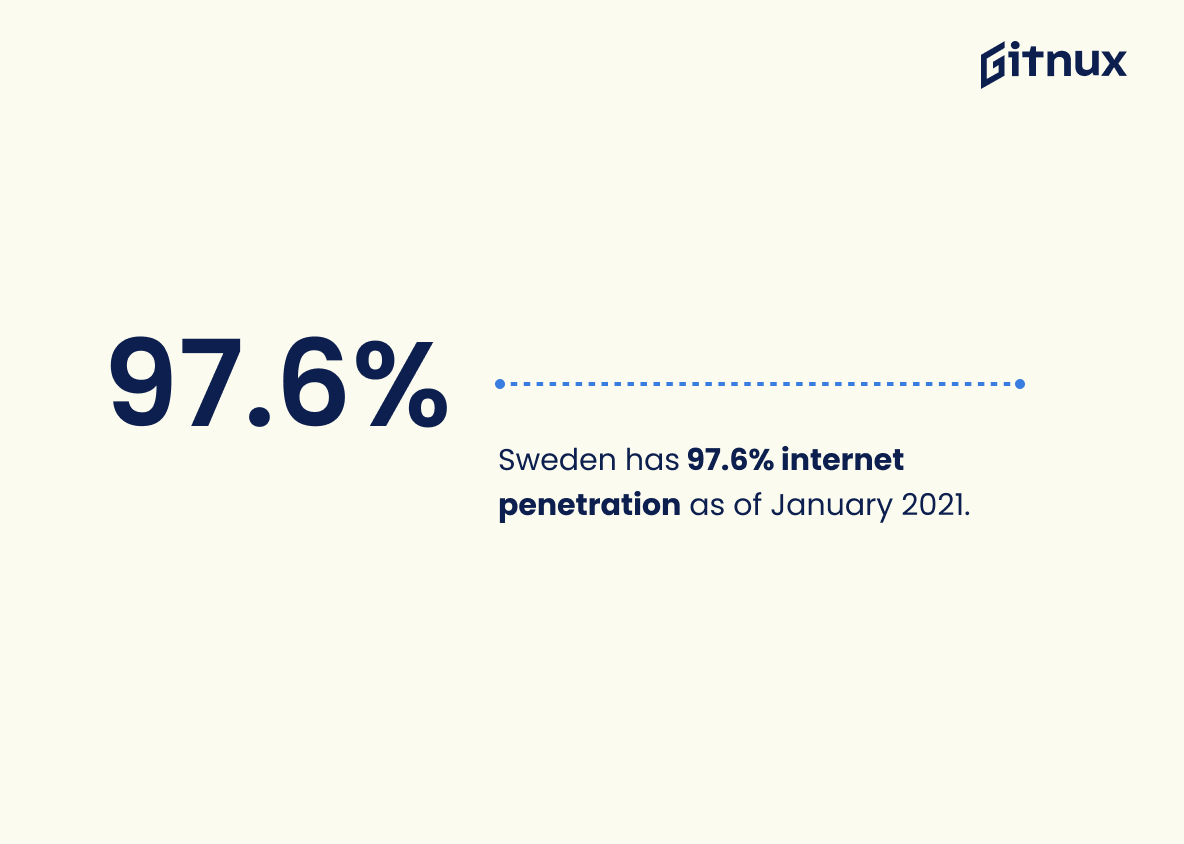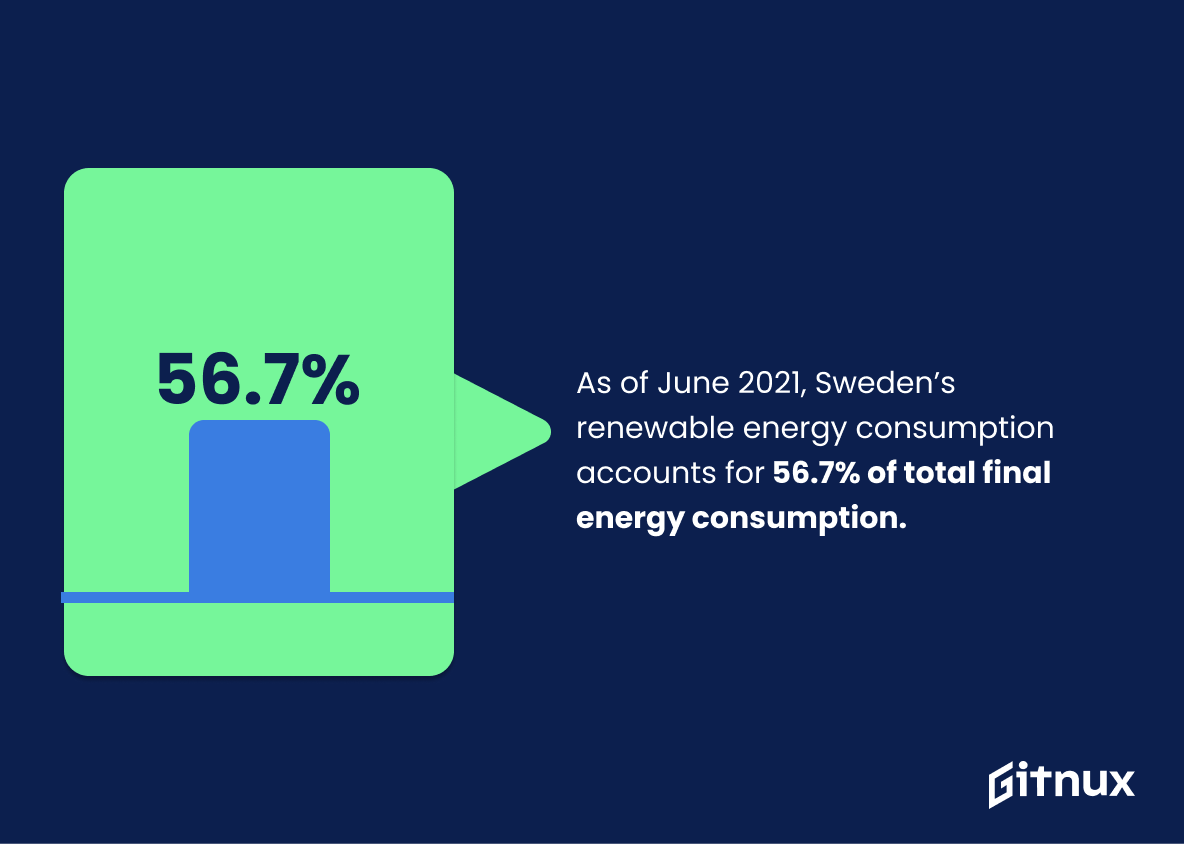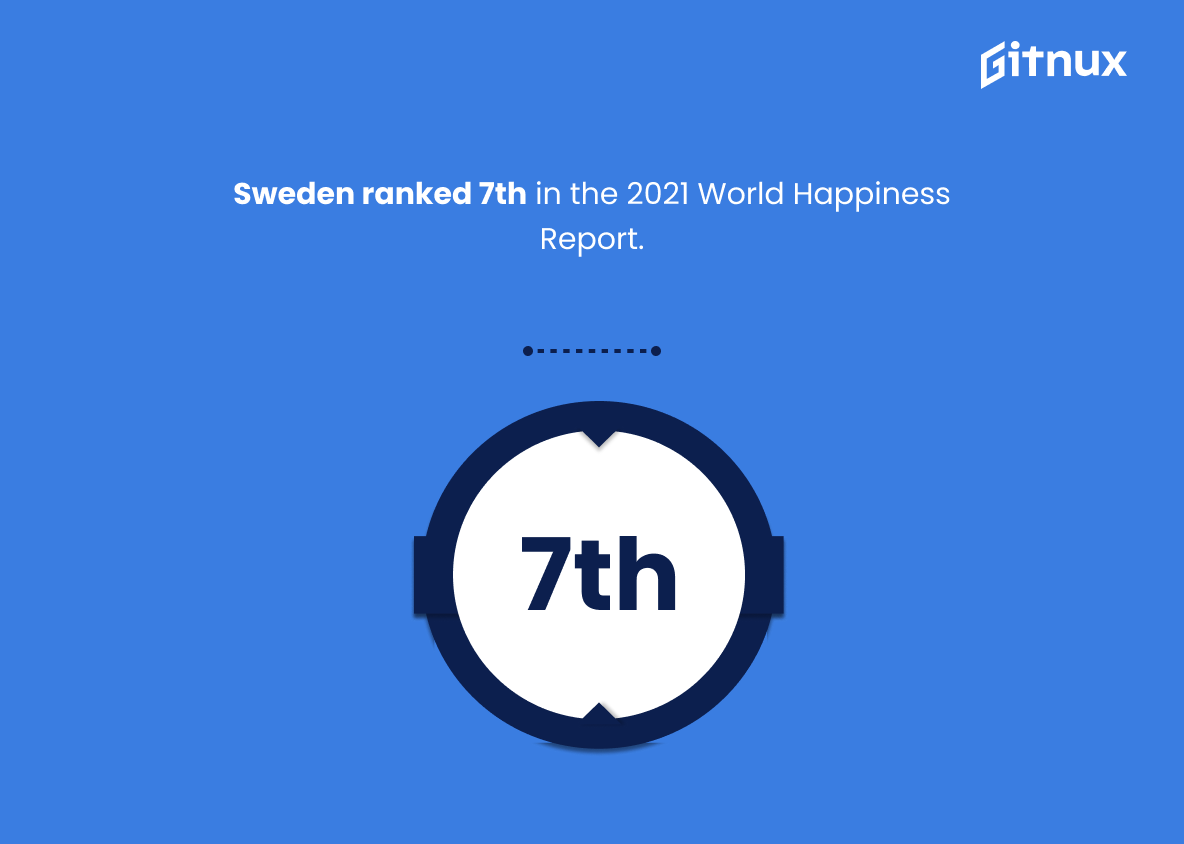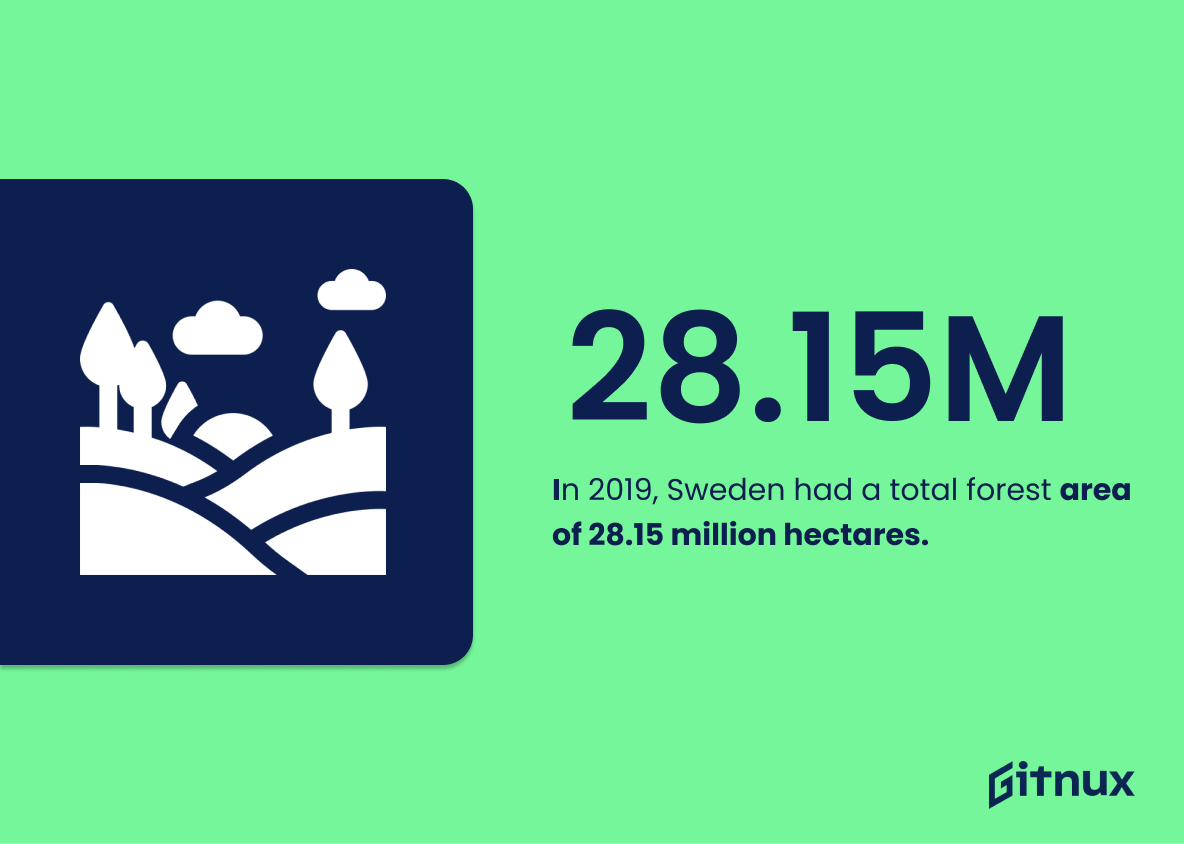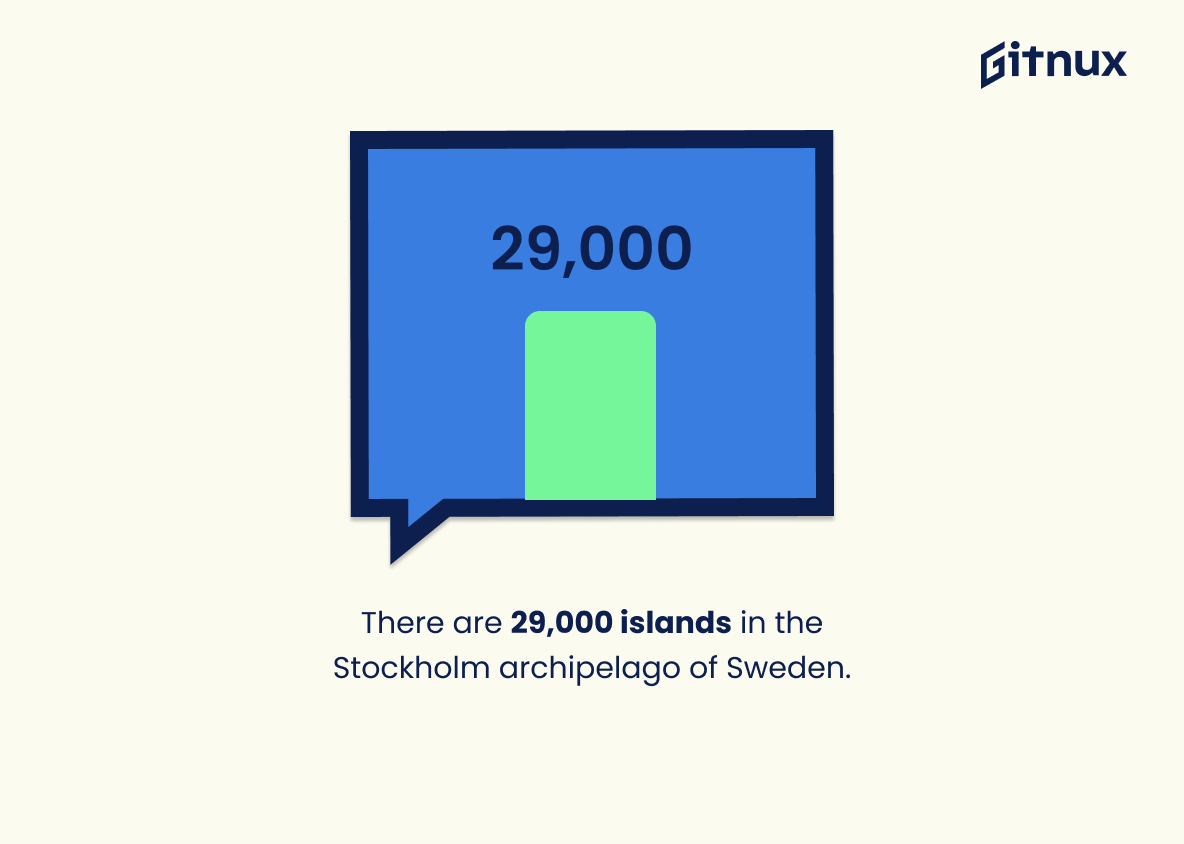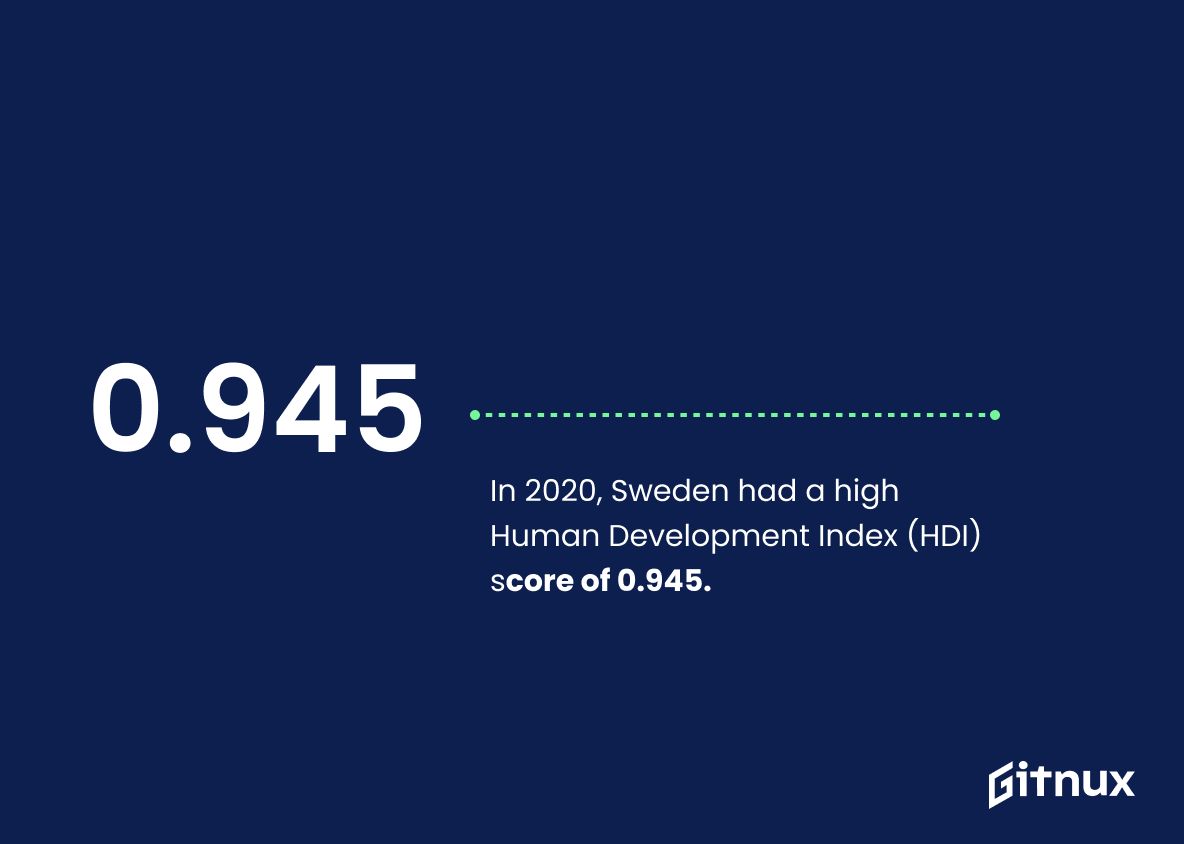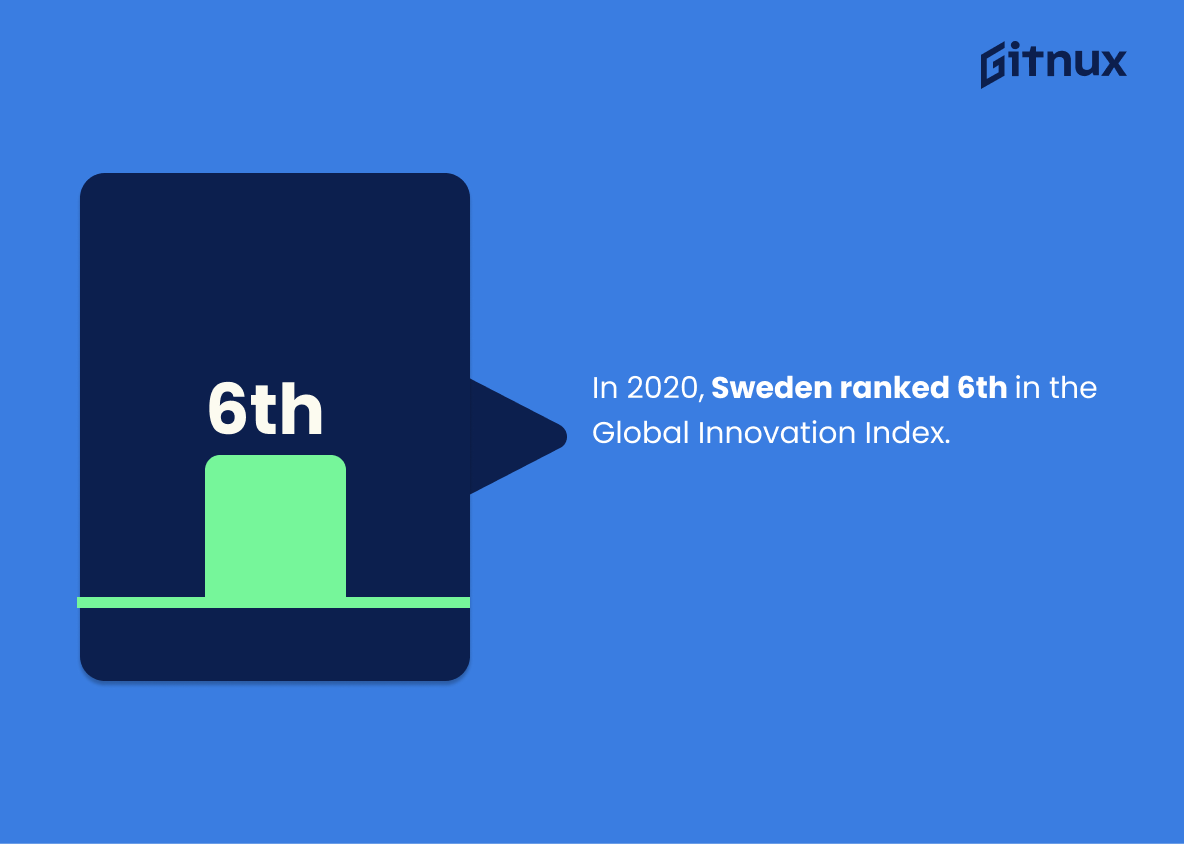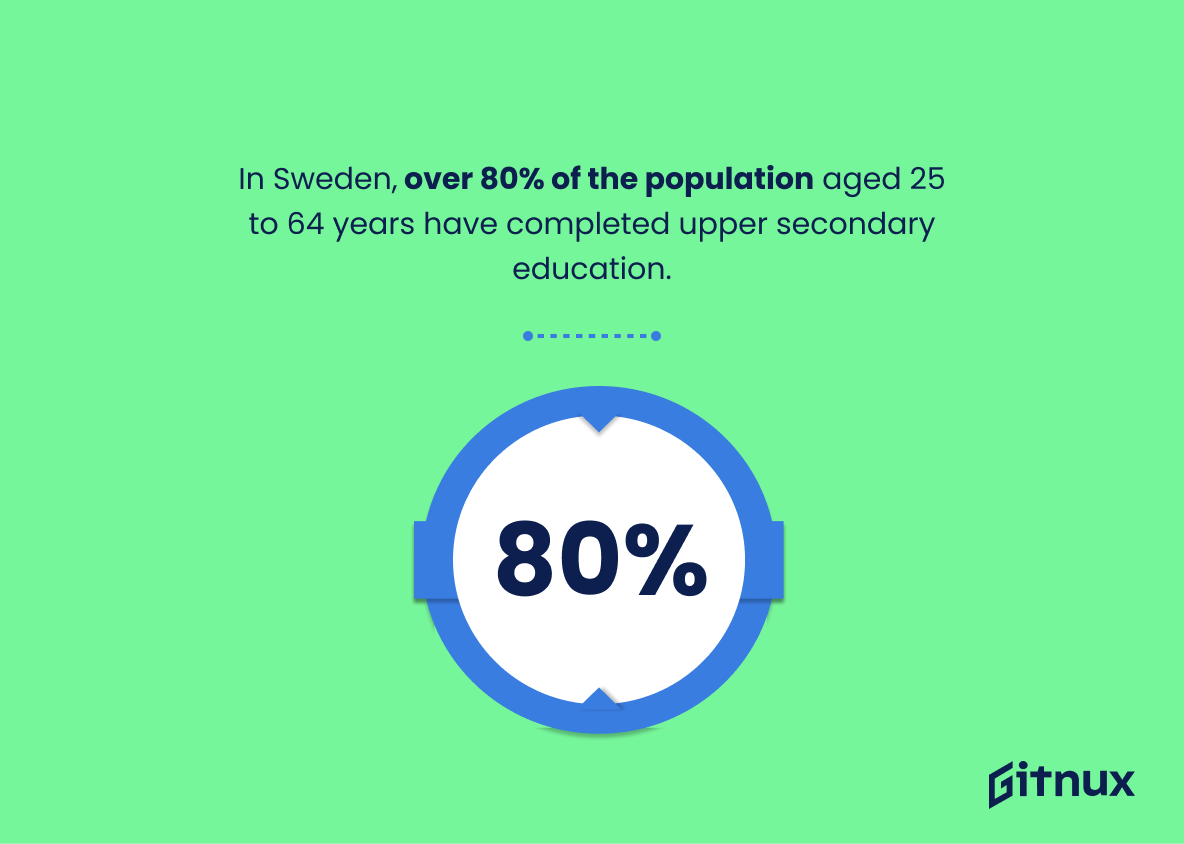Welcome to this blog post about Sweden Statistics. In this article, we will be exploring 20 different statistics related to the country of Sweden. We’ll look at population size and growth, GDP figures, life expectancy rates, unemployment levels, exports values and more. Additionally, we’ll examine how well Sweden is doing in terms of press freedom rankings as well as gender equality indices. Finally, we will also take a closer look at some other interesting facts such as internet penetration rate and renewable energy consumption percentage. So let’s dive right into it.
This statistic is an important indicator of the size and scope of Sweden’s population. It provides a snapshot of the country’s population and can be used to measure the growth or decline of the population over time. Additionally, it can be used to compare Sweden’s population to other countries and to analyze the demographic makeup of the country. This information can be used to inform policy decisions and to better understand the needs of the Swedish people.
In 2021, Sweden’s GDP is estimated to be $586 billion (USD).
This statistic is a telling indication of Sweden’s economic strength and stability. It speaks to the country’s ability to generate wealth and maintain a healthy economy, which is essential for the well-being of its citizens. It also provides a benchmark for comparison with other countries, allowing for a better understanding of Sweden’s economic standing in the world.
Sweden Statistics Overview
In 2020, Sweden had a life expectancy of 83.03 years.
This statistic is a testament to the quality of life in Sweden, as it indicates that the average Swede can expect to live a long and healthy life. It speaks to the country’s commitment to providing its citizens with access to quality healthcare, education, and other resources that contribute to a longer life expectancy. This statistic is a powerful reminder of the importance of investing in the health and wellbeing of a nation’s citizens.
In 2020, Sweden had a relatively low unemployment rate of approximately 6.56%.
The low unemployment rate of 6.56% in 2020 is a testament to Sweden’s economic success and stability. It is a sign that the country is doing well in terms of providing jobs and opportunities for its citizens. This statistic is a reflection of the country’s commitment to providing a strong and prosperous economy for its people. It is also a sign of the country’s commitment to creating a healthy and vibrant society. This statistic is an important indicator of the overall health of the Swedish economy and is a key factor in understanding the country’s overall economic performance.
In 2019, Sweden had a total exports value of $162.34 billion (USD).
This statistic is indicative of Sweden’s economic strength and global influence. It shows that the country is a major player in the international market, with its exports reaching a staggering $162.34 billion. This is a testament to Sweden’s economic prowess and its ability to produce goods and services that are in demand around the world.
Sweden was ranked 7th in the 2021 World Press Freedom Index.
The 2021 World Press Freedom Index ranking of Sweden at 7th place is indicative of the country’s commitment to upholding the freedom of the press. This is an important factor in ensuring that citizens have access to accurate and unbiased information, which is essential for a healthy democracy. As such, this statistic is a testament to Sweden’s dedication to protecting the rights of its citizens and promoting a free and open society.
In 2021, Sweden ranked 1st in the Online Privacy Index.
The fact that Sweden ranked 1st in the Online Privacy Index in 2021 is a testament to the country’s commitment to protecting its citizens’ digital rights. This is especially important in a world where data privacy is increasingly becoming a major concern. By taking the lead in online privacy, Sweden is setting an example for other countries to follow and is demonstrating its dedication to safeguarding its citizens’ data.
In 2021, Sweden ranked 3rd in the Global Gender Gap Index.
This statistic is a testament to Sweden’s commitment to gender equality, placing them among the top countries in the world for closing the gender gap. It is a reflection of the country’s dedication to creating a more equitable society, and serves as a reminder of the progress that can be made when governments prioritize gender equality.
In 2021, Sweden scored 89/100 in the Corruption Perception Index.
The Corruption Perception Index score of 89/100 for Sweden in 2021 is a testament to the country’s commitment to transparency and accountability. This score reflects the nation’s dedication to upholding ethical standards and preventing corruption in all aspects of public life. This is an important statistic to consider when discussing the overall state of Sweden, as it demonstrates the country’s commitment to upholding the highest standards of integrity.
Sweden has a high literacy rate of 99% for both males and females.
This statistic is a testament to the educational excellence of Sweden, demonstrating that the country has achieved a remarkable level of literacy among both genders. It is a reflection of the commitment to education that Sweden has made, and serves as a reminder of the importance of investing in education for the benefit of society.
Sweden has 97.6% internet penetration as of January 2021.
The high internet penetration rate in Sweden of 97.6% as of January 2021 is indicative of the country’s commitment to digital advancement. This statistic speaks to the nation’s dedication to providing its citizens with access to the latest technology and the ability to stay connected with the world. It also reflects the country’s investment in infrastructure and its commitment to creating a digital economy that is beneficial to all. This statistic is an important part of understanding the current state of Sweden and its potential for growth in the future.
As of June 2021, Sweden’s renewable energy consumption accounts for 56.7% of total final energy consumption.
This statistic is a testament to Sweden’s commitment to sustainability and renewable energy sources. It highlights the country’s dedication to reducing its carbon footprint and protecting the environment. This is especially important in the context of a blog post about Sweden Statistics, as it demonstrates the nation’s commitment to sustainability and its progress in this area.
Sweden ranked 7th in the 2021 World Happiness Report.
The 2021 World Happiness Report ranking Sweden 7th is a testament to the country’s commitment to creating a high quality of life for its citizens. This is evidenced by the fact that Sweden has consistently ranked in the top 10 of the report since its inception in 2012. This statistic speaks to the country’s dedication to providing its citizens with a safe and secure environment, access to quality healthcare, and a strong social safety net. It is no wonder that Sweden is considered one of the happiest countries in the world.
In 2019, Sweden had a total forest area of 28.15 million hectares.
This statistic is a testament to Sweden’s commitment to preserving its natural environment. With 28.15 million hectares of forest, Sweden is home to some of the most beautiful and diverse ecosystems in the world. This statistic is a reminder of the importance of protecting our planet’s natural resources and the need to continue to invest in conservation efforts.
There are 29,000 islands in the Stockholm archipelago of Sweden.
This statistic is a testament to the sheer beauty of Sweden, as the Stockholm archipelago is a stunning collection of islands that offer a unique experience for visitors. It is a reminder of the country’s natural beauty and the vastness of its landscape, making it a great destination for those looking to explore the outdoors.
In 2020, Sweden had a high Human Development Index (HDI) score of 0.945.
The Human Development Index (HDI) score of 0.945 for Sweden in 2020 is a testament to the country’s commitment to providing its citizens with a high quality of life. This statistic speaks volumes about the Swedish government’s dedication to providing its citizens with access to education, healthcare, and other essential services. It also reflects the country’s strong economy and its ability to provide its citizens with a secure and prosperous future. This impressive HDI score is a clear indication that Sweden is a great place to live and work.
Sweden has a total coastline length of 3,218 kilometers.
The fact that Sweden has a total coastline length of 3,218 kilometers is an important statistic to consider when discussing Sweden’s geography. This statistic provides insight into the country’s access to the sea, which can be used to understand the country’s trade and transportation networks, as well as its potential for tourism. Additionally, the coastline length can be used to understand the country’s climate and weather patterns, which can be beneficial for those looking to visit or live in Sweden.
In 2020, Sweden ranked 6th in the Global Innovation Index.
This statistic is a testament to Sweden’s commitment to innovation and progress. It highlights the country’s dedication to creating a culture of innovation and its ability to stay ahead of the curve in terms of technological advancement. This is an important factor in Sweden’s overall success and is a key indicator of its economic and social progress.
In Sweden, over 80% of the population aged 25 to 64 years have completed upper secondary education.
This statistic is indicative of the high value Sweden places on education. It speaks to the country’s commitment to providing its citizens with the opportunity to pursue higher education and the resources to do so. This is an important factor in understanding the overall quality of life in Sweden, as it demonstrates the country’s dedication to providing its citizens with the tools to succeed.
Conclusion
Sweden is a country with many impressive statistics. In 2020, its population was approximately 10.32 million and it had an estimated GDP of $586 billion (USD). Its life expectancy in the same year was 83.03 years, while unemployment rate stood at 6.56%. Sweden also has a total exports value of $162.34 billion (USD) and ranked 7th in the 2021 World Press Freedom Index as well as 1st in the Online Privacy Index that same year. Additionally, Sweden scored 89/100 on Corruption Perception Index and achieved 99% literacy for both males and females respectively; 97.6% internet penetration; 56.7% renewable energy consumption; 2815 million hectares forest area; 29000 islands Stockholm archipelago; 094 HDI score ; 3218 kilometers coastline length ; 6th rank Global Innovation index ,1 .7 doctors per 1000 inhabitants & 80 % upper secondary education completion rate among 25-64 age group people making it one of the most developed countries globally today.
References
0. – https://www.transparency.org
1. – https://www.visitstockholm.com
2. – https://www.comparitech.com
3. – https://www.sweden.se
4. – https://www.rsf.org
5. – https://www.statista.com
6. – https://www.reports.weforum.org
7. – https://www.indexmundi.com
8. – https://www.worldhappiness.report
9. – https://www.hdr.undp.org
10. – https://www.data.worldbank.org
11. – https://www.globalinnovationindex.org
12. – https://www.macrotrends.net
13. – https://www.cia.gov
14. – https://www.datareportal.com
15. – https://www.ceicdata.com
16. – https://www.oecd.org
17. – https://www.scb.se
